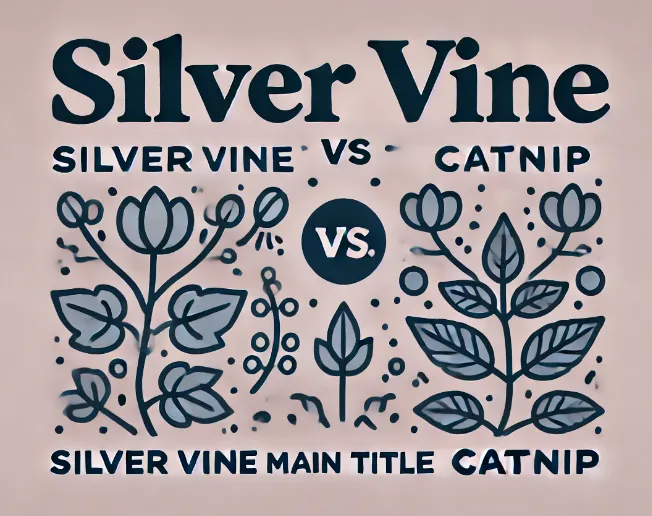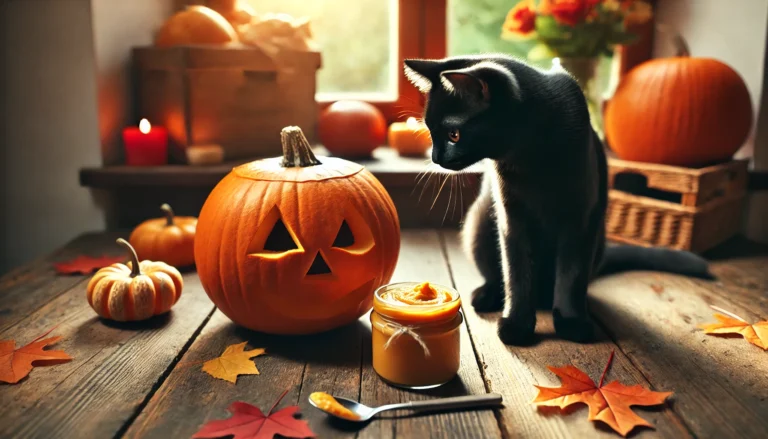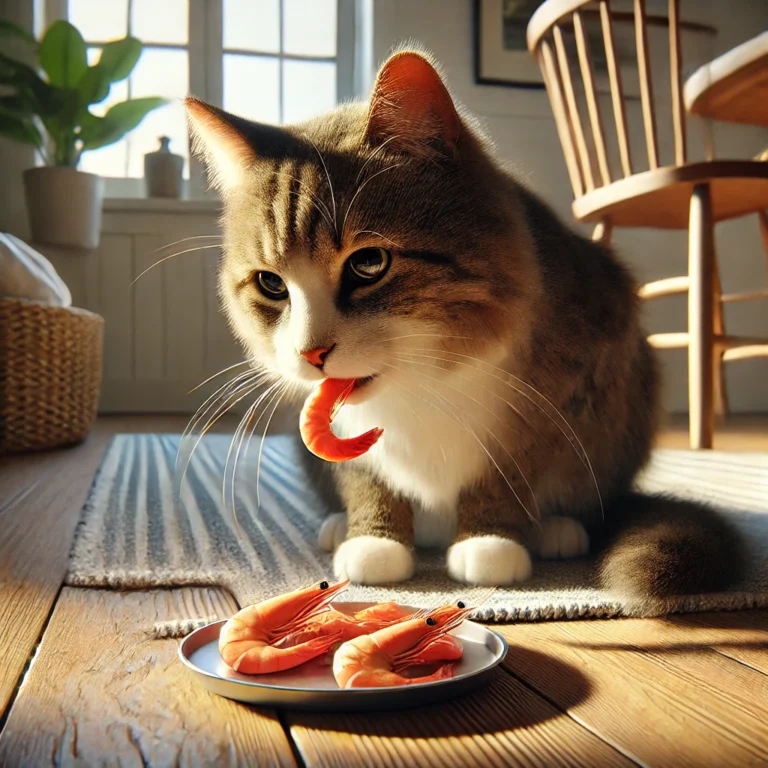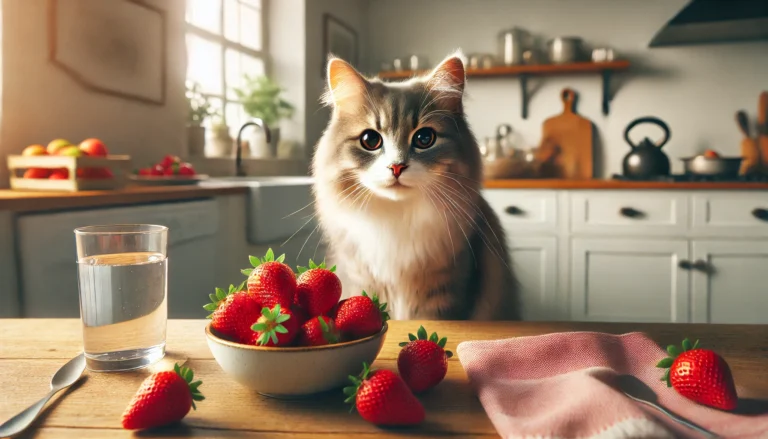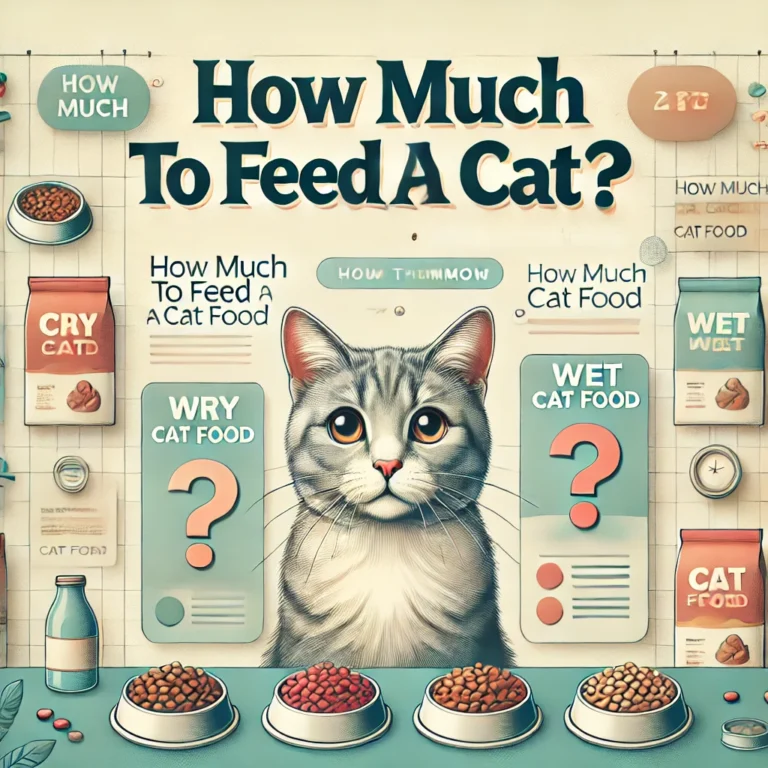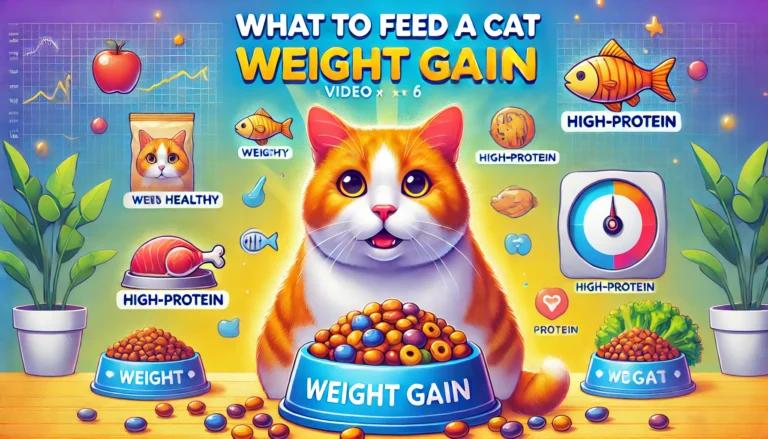can cats eat peanut butter?

Can cats eat peanut butter? The answer is YES, Cats can eat peanut butter in small amounts, but it should not be a regular part of their diet due to its high fat content and potential for added sugars or artificial sweeteners. As cat owners, we often find ourselves wondering if certain human foods can be shared with our feline companions. In this article, we’ll explore all aspects of feeding peanut butter to cats — from its nutritional content and potential benefits to the risks it poses, and finally, alternative options for your pet.
What is Peanut Butter?
Peanut butter is a spread made from roasted peanuts, often blended with oils, salt, and sometimes sugar or sweeteners. While it is a common treat for humans, can cats eat peanut butter? To answer this question, we need to understand the composition of peanut butter and its potential effects on feline health.
Nutritional Composition of Peanut Butter
Peanut butter is a high-calorie food that is rich in fat, protein, and a range of vitamins and minerals. Here’s a typical breakdown of the nutritional content per 100 grams of plain peanut butter:
| Nutrient | Amount per 100g |
|---|---|
| Calories | 588 kcal |
| Fat | 50g |
| Saturated Fat | 10g |
| Protein | 25g |
| Carbohydrates | 20g |
| Fiber | 6g |
| Sugar | 9g |
| Vitamins & Minerals | Magnesium, Vitamin E, Niacin, Folate, etc. |
Key Takeaways:
- High in Fat: The fat content in peanut butter is substantial, making it a calorie-dense food. This is important because cats, particularly indoor cats, don’t require as many calories as humans.
- High in Protein: While the protein is beneficial, cats have specific protein requirements, and too much protein from non-animal sources may not be ideal for their diet.
- Carbohydrates & Sugars: Cats are obligate carnivores, meaning their bodies don’t process carbohydrates and sugars as efficiently as humans.
Can Cats Eat Peanut Butter?
So, can cats eat peanut butter safely? In small amounts, peanut butter is not toxic to cats, but it does not align well with their dietary needs. Cats are obligate carnivores, meaning they thrive on animal-based proteins and fats, and their digestive systems are not well-equipped to handle the high levels of fats, sugars, and carbohydrates present in peanut butter.
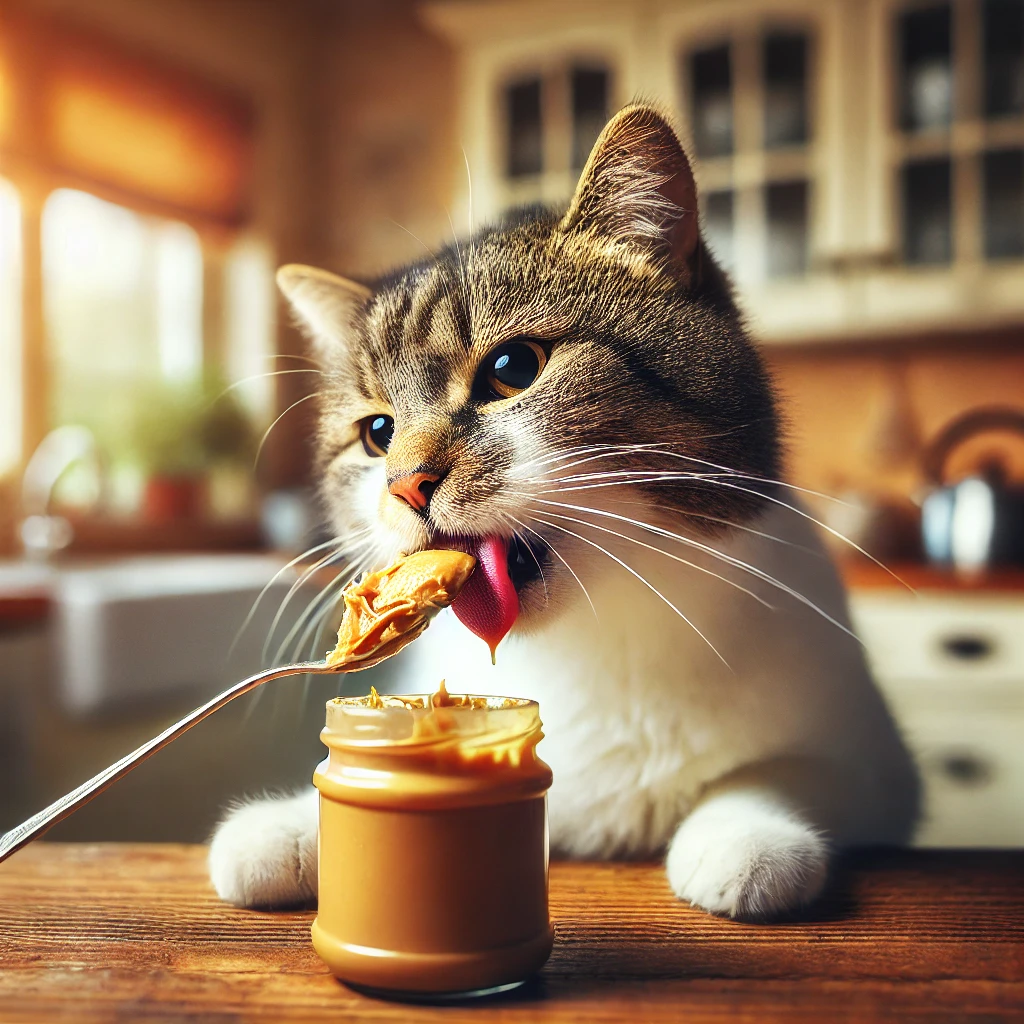
Key Considerations:
- Not a Natural Food for Cats: While peanut butter isn’t toxic to cats in small quantities, it is not a food that fits naturally into a feline diet.
- Digestive Issues: Cats may have difficulty digesting peanut butter due to its high fat content and the presence of additives (such as salt or sugar) that are not ideal for their digestive systems.
Potential Health Benefits for Cats
Despite the concerns, can cats eat peanut butter in a way that benefits their health? While it’s not the best choice for regular feeding, peanut butter does offer some potential benefits:
- Source of Protein: The protein in peanut butter can contribute to your cat’s daily intake, although it is not the best source.
- High in Healthy Fats: The monounsaturated fats found in peanuts can provide some energy, but cats primarily need animal-based fats.
- Occasional Treat: When given sparingly, peanut butter can serve as an interesting occasional treat or a way to hide medications, provided your cat tolerates it.
Risks and Concerns of Feeding Peanut Butter to Cats
While can cats eat peanut butter without harm, there are several risks to keep in mind when offering it as a treat:
1. High Fat Content
Peanut butter is very high in fat, and feeding your cat too much can lead to weight gain, obesity, or pancreatitis, a serious condition involving inflammation of the pancreas. Excessive fat intake is especially risky for cats with pre-existing health conditions like diabetes or liver disease.
2. Potential Allergies
Some cats may be allergic to peanuts, which could cause symptoms like itching, swelling, or digestive upset.
Do you know?
Cat vomiting can signal a range of issues, from hairballs to serious health conditions—understanding the cause is key. Learn the different types of vomit, their causes, and how to handle your cat’s upset stomach with confidence.
3. Additives and Preservatives
Many commercial peanut butters contain added sugar, salt, or preservatives, which are harmful to cats. Excess salt can lead to dehydration, kidney strain, or sodium poisoning.
4. Choking Hazards
Peanut butter is sticky and thick, which could potentially pose a choking hazard, especially if given in large spoonfuls.
Table: Risks of Peanut Butter for Cats
| Risk | Explanation |
|---|---|
| High in fat | Can lead to obesity, pancreatitis, and digestive issues |
| Allergies | Some cats may be allergic to peanuts or other ingredients |
| Additives and preservatives | High salt, sugar, or chemicals can be harmful |
| Choking risk | Sticky texture can cause breathing issues or blockages |
6. Symptoms of Peanut Butter Toxicity
Though rare, overconsumption of peanut butter can cause symptoms of toxicity or severe digestive distress. Symptoms to watch for include:
- Vomiting
- Diarrhea
- Loss of appetite
- Lethargy
- Difficulty breathing (due to choking)
- Excessive thirst or urination (due to high salt intake)
If you notice any of these symptoms after your cat consumes peanut butter, consult a veterinarian immediately.
How Much Peanut Butter is Safe for Cats?
If you decide to feed peanut butter to your cat, moderation is key. Can cats eat peanut butter safely in larger quantities? Not really. Small amounts — typically no more than a teaspoon — can be given occasionally as a treat or to administer medication. However, it’s important to remember that this should not become a regular part of their diet. Peanut butter should never replace a balanced, species-appropriate cat food.
Tips
Only offer plain peanut butter without added sugar, salt, or artificial sweeteners (especially xylitol, which is toxic to cats).
How to Feed Peanut Butter to Your Cat Safely
If you want to try peanut butter as an occasional treat for your cat, here’s how to do it safely:
- Choose Natural Peanut Butter: Opt for unsweetened, unsalted, and organic peanut butter without preservatives or additives.
- Use Peanut Butter as a Pill Pocket: If your cat is on medication, you can use peanut butter to disguise pills. Roll a small amount around the pill, and your cat may ingest it without noticing.
- Limit Portions: Give only a small spoonful (less than 1 teaspoon) and monitor your cat’s reaction.
- Watch for Digestive Issues: After giving peanut butter, observe your cat for any signs of gastrointestinal distress, such as vomiting or diarrhea.
Peanut Butter Alternatives for Cats
If you’re looking for a safer or healthier alternative to peanut butter, consider these options:
- Cat-Specific Treats: Many pet stores sell treats specifically designed for cats that are safer and more nutritionally appropriate than peanut butter.
- Tuna or Salmon Paste: Many cats love the taste of tuna or salmon. You can use these as a treat or for administering medication.
- Plain Yogurt: Small amounts of plain, unsweetened yogurt can provide a tasty and safe treat for cats (if they aren’t lactose intolerant).
Conclusion: Can cats eat Peanut Butter?
While peanut butter is not toxic to cats, can cats eat peanut butter on a regular basis? It’s not the best choice. Its high fat and sugar content, along with potential additives, make it unsuitable for cats on a regular basis. Offering peanut butter occasionally, in small quantities, and without harmful additives may be acceptable for some cats. However, it’s always best to prioritize treats and foods designed for feline health.
If you want to offer variety in your cat’s diet, consider safer alternatives that align more closely with their nutritional needs. When in doubt, always consult your veterinarian before introducing new foods to your pet’s diet.
Is it safe for cats to eat peanut butter?
Peanut butter is not toxic to cats in small amounts, but it’s not ideal for their diet. It’s high in fat, sugar, and salt, which can lead to digestive issues, obesity, or pancreatitis if consumed frequently. If you give peanut butter, use it sparingly and ensure it’s free from harmful additives like xylitol or artificial sweeteners.
Why is my cat obsessed with peanut butter?
Your cat might be attracted to the strong smell and taste of peanut butter, which may mimic the scent of protein-rich foods. Cats can also develop a liking for peanut butter because of its texture and the fact that it’s often used to hide medications. However, it’s important to monitor the amount and frequency of peanut butter consumption, as it’s not a healthy treat for cats.
What aren’t cats allowed to eat?
Cats should avoid foods that are toxic or harmful to them, such as:
Chocolate: Contains theobromine, which is toxic to cats.
Onions & Garlic: Can damage red blood cells and cause anemia.
Grapes & Raisins: Can cause kidney failure.
Alcohol: Toxic even in small amounts.
Caffeine: Found in coffee, tea, and energy drinks, and can cause heart problems or seizures.
Raw Meat/Fish: Can carry bacteria or parasites that may harm cats.
Xylitol: A sugar substitute that is highly toxic to cats and can cause liver failure.
Can cats eat jelly?
Jelly is not ideal for cats. It contains high amounts of sugar, and some types may have artificial sweeteners or preservatives that could harm your cat. Cats don’t process sugar well, and frequent exposure to it can lead to obesity or diabetes. It’s best to avoid giving your cat jelly.
Can cats have honey?
Honey is not toxic to cats but should only be given in small amounts, if at all. Honey is high in sugar and can contribute to weight gain or digestive issues. Additionally, since cats are obligate carnivores, they don’t benefit from the nutrients in honey. It’s best to stick to treats designed specifically for cats.
Can cats eat cheese?
Cheese can be given to cats in small amounts, but many cats are lactose intolerant, meaning they can’t properly digest dairy products. If your cat consumes cheese and shows signs of gastrointestinal distress (like diarrhea or vomiting), avoid giving them dairy. Stick to lactose-free dairy treats or better yet, avoid dairy altogether.

